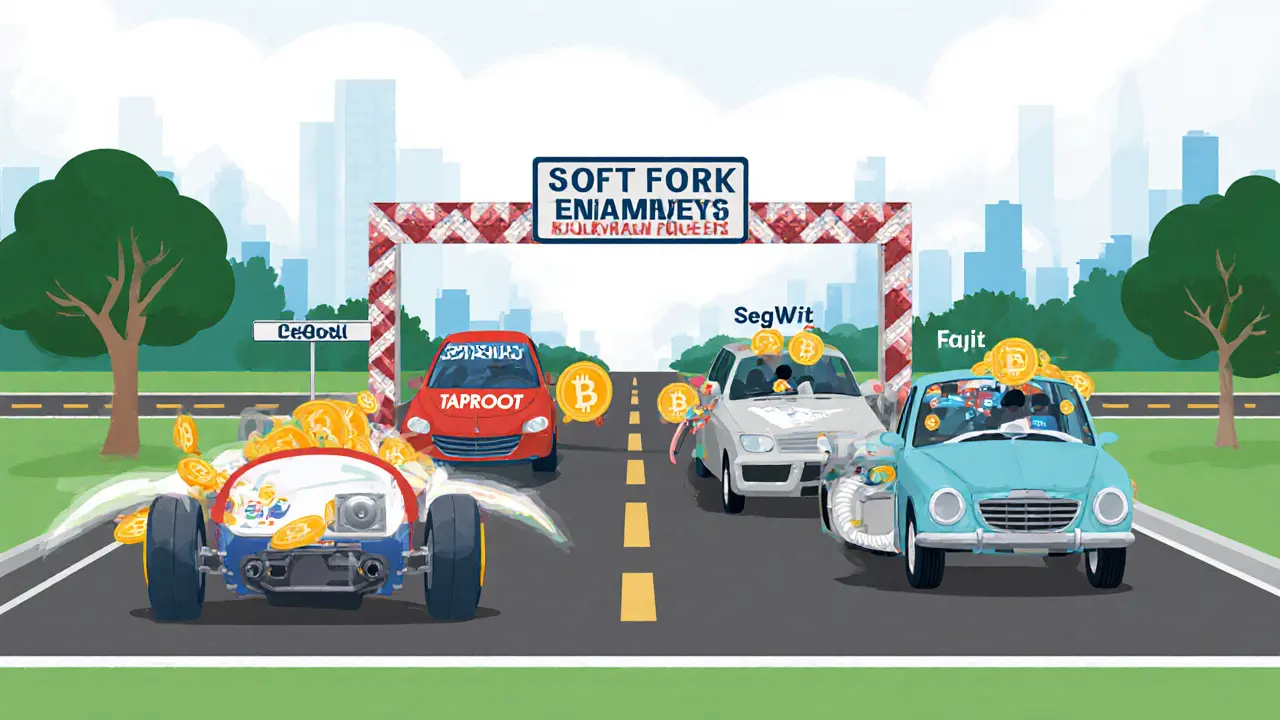Soft Fork: What It Is, How It Works, and Why It Matters in Crypto
When a blockchain updates without breaking older versions, it’s called a soft fork, a backward-compatible protocol upgrade that keeps old nodes valid while enforcing new rules. Also known as a backward-compatible fork, it lets the network evolve without forcing everyone to upgrade at once. Unlike a hard fork, which splits the chain into two separate networks, a soft fork keeps everything on one path—old nodes just see transactions as valid even if they don’t understand the new rules.
This matters because blockchain fork, the process of changing a blockchain’s rules can be messy. Soft forks are quieter, safer, and more common in mature networks like Bitcoin. For example, when Bitcoin added SegWit in 2017, it was a soft fork—miners signaled support, and the network kept running. Old wallets still worked. No one had to panic. That’s why most major upgrades in Bitcoin and similar chains use soft forks: they reduce risk and keep users on board.
But here’s the catch: a soft fork only works if enough miners or validators adopt it. If less than 51% support the new rules, it fails. That’s why community consensus is everything. You won’t see a soft fork in a chaotic, fragmented network. It needs trust, coordination, and a clear goal—like fixing a bug, improving scalability, or tightening security. That’s why you’ll find soft forks in posts about Bitcoin soft fork, upgrades to the Bitcoin protocol that maintain network integrity without splitting or when people compare hard fork, a non-backward-compatible blockchain change that creates a permanent split to soft forks. The difference isn’t just technical—it’s about who controls change and how much disruption it causes.
What you’ll find below aren’t theory-heavy essays. These are real-world reviews and breakdowns of crypto projects that either used soft forks, got caught in their aftermath, or failed because they didn’t understand how upgrades work. You’ll see how a poorly timed soft fork can leave a DEX with zero volume, how a chain that refuses to upgrade becomes obsolete, and why some projects pretend they’re "decentralized" while quietly relying on centralized upgrades. This isn’t about coding. It’s about what happens when rules change—and who gets left behind.
Soft Fork Backward Compatibility Explained: How Blockchain Upgrades Work Without Breaking Old Nodes
Soft forks let blockchains upgrade safely by making rules stricter while keeping old software working. Learn how Bitcoin's SegWit and other upgrades work without splitting the network.
Details +